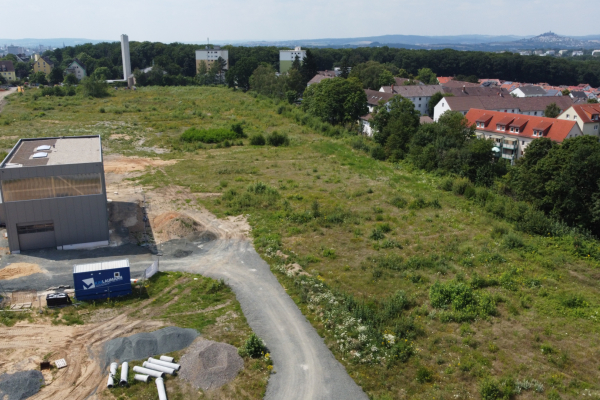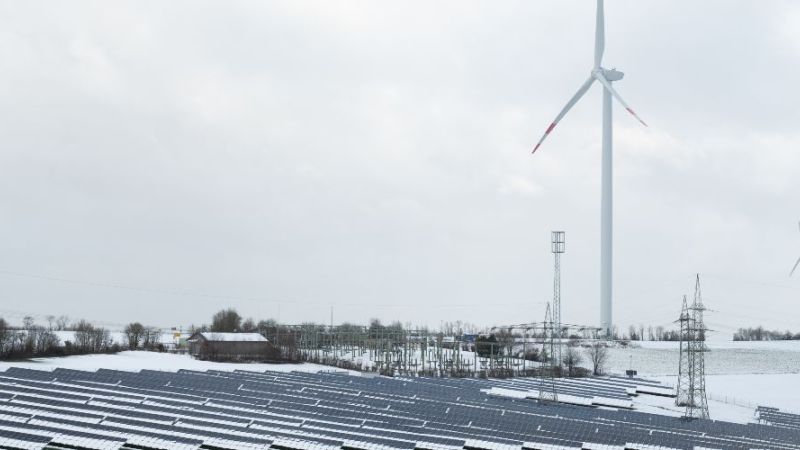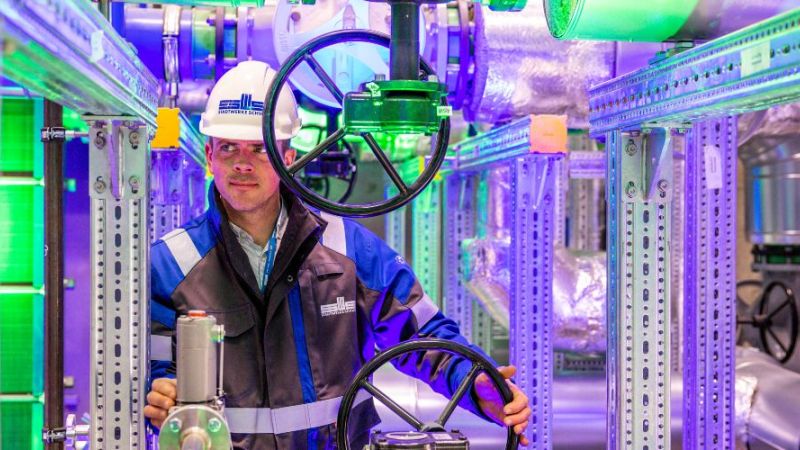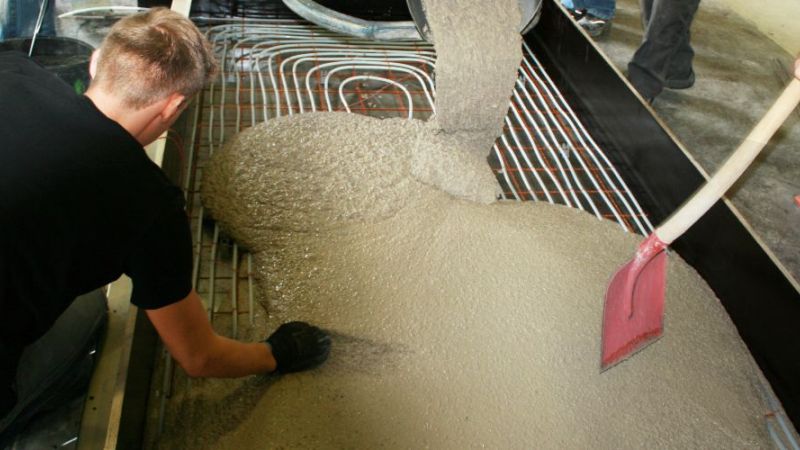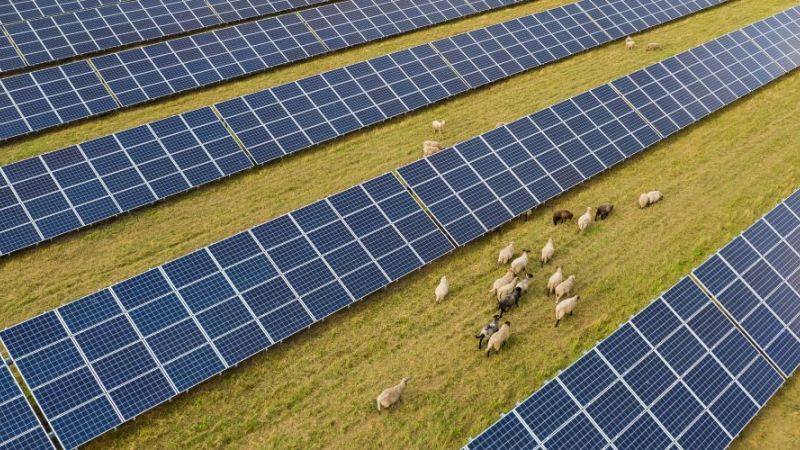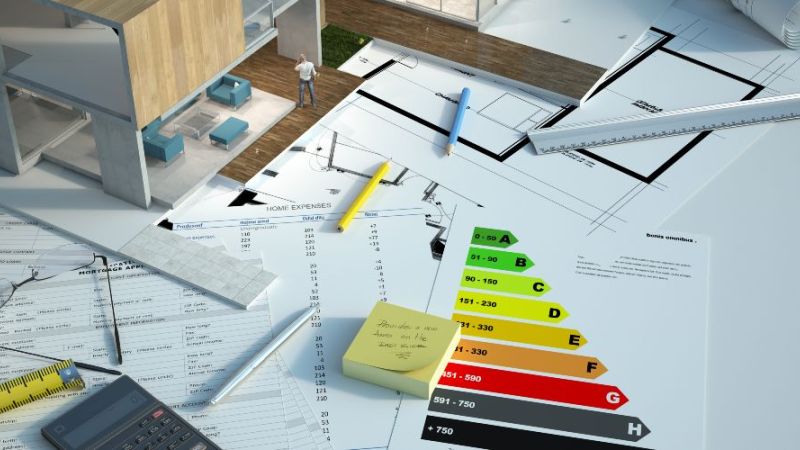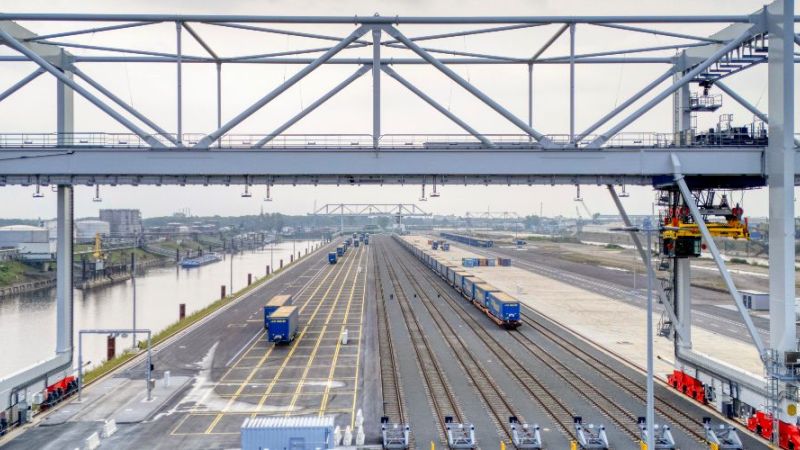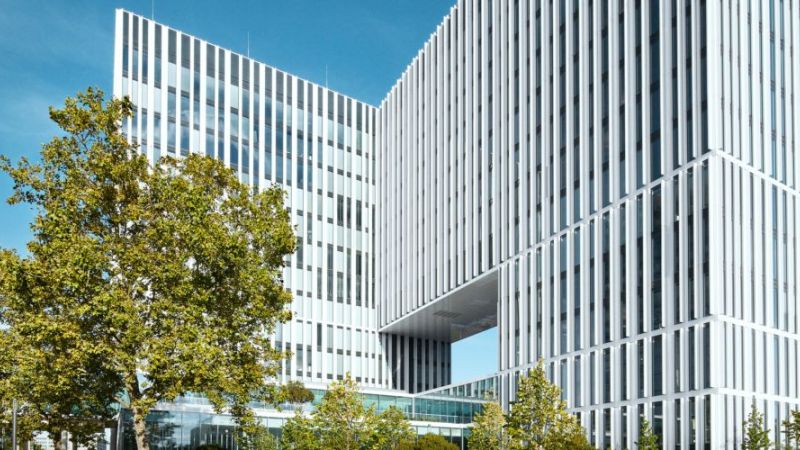 © Technische Hochschule Mittelhessen
© Technische Hochschule Mittelhessen
Connecting to municipal utilities’ energy supply
Hybrid Storage System Supplies District with Heat and Electricity
Where the military once trained, an energy-efficient new development district that will serve the grid is now being built in Gießen. At the heart of the district will be a newly developed hybrid storage system that can store heat up to 1,200 degrees Celsius and convert it back into electrical energy.
The district heating network on the former military site in Gießen has already been installed, the energy centre is up and running, and construction of the first residential buildings has begun. In future, there will be an energy-efficient new development area with an innovative core here: a hybrid storage system that can store both heat and electricity. More than 400 residential units and an industrial park with five to six commercial units covering an area roughly as big as ten football fields (7.5 hectares) will benefit from this. Energy resources can be used flexibly, the district’s energy demand can be increasingly met locally, and grid costs – e.g. for grid expansion or optimized grid management – can be reduced. An important prerequisite in this regard is intelligent, digital control of the district’s energy system.
How electricity and heat flows benefit from each other
The task of project leader Prof. Stefan Lechner (Technische Hochschule Mittelhessen) and his team is to intelligently link the electricity and heating sectors on site. In the FlexQuartier Gießen research project funded by the German Federal Ministry for Economic Affairs and Climate Action, the project partners aim to establish an energy-efficient district that serves the grid. In addition to Technische Hochschule Mittelhessen, the Gießen municipal utilities (Stadtwerke Gießen), the companies Mittelhessen Netz and Smart Power, as well as the Gießen town planning office are involved in the project.
For the district’s electricity supply, the partners mainly focus on renewable energy from photovoltaic systems. In cooperation with the town of Gießen, it was ensured that PV systems will be installed on at least 50 % of the rooftop areas. This corresponds to a peak power of more than 1,000 kilowatts. For example, it will be possible to temporarily store the electricity generated by the photovoltaic systems in the Gießen district and not required for the district’s own use in the new storage system and to use it to charge electric vehicles as well as to supply the district with heat. In this context, electrically powered heat pumps are an important pillar. These heat pumps will make it possible for those living in the district to utilize the energy centre’s waste heat as well as the ambient heat.
Energy exchange beyond district boundaries
“In the summer period, the energy generated locally in the district in combination with the new storage system will cover most of the energy demand,” says project team member Felix Holy from Technische Hochschule Mittelhessen. Particularly in the winter months, it will be important that Stadtwerke Gießen supplies the required thermal energy via its district heating network. This energy is based on renewable energy sources and combined heat and power systems.
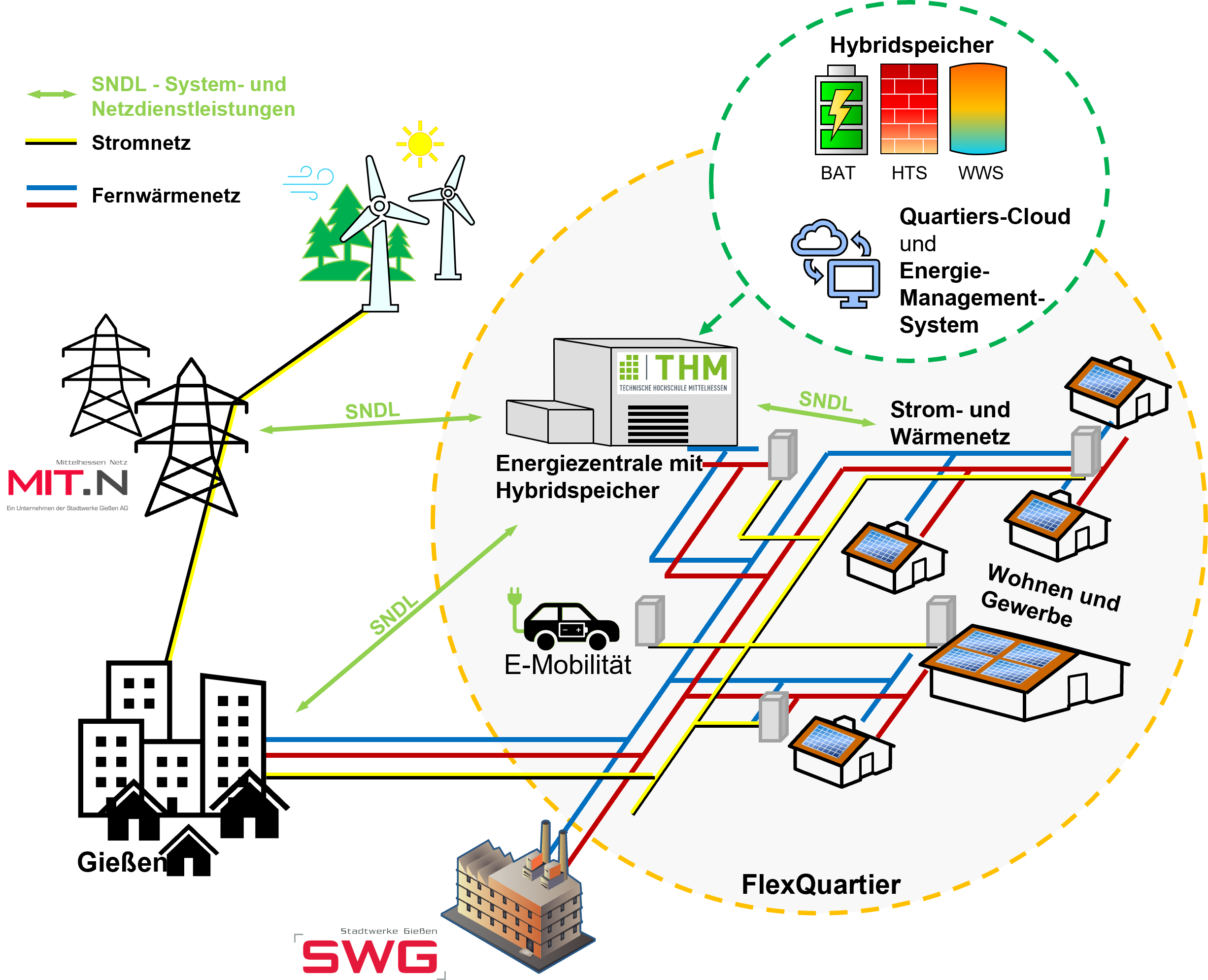
District heating is supplied at a temperature of between 65 and 70 degrees Celsius instead of the usual 80 or 110 degrees Celsius. The reason for this is that “we are pursuing a LowEx approach in the Gießen district. This means that the energy centre is designed in such a way that the buildings can also be supplied with low-temperature heat such as waste heat from the heat storage system or ambient heat. This saves us considerable amounts of primary energy,” says Holy.
The hybrid storage system also enables an “energy exchange” beyond the district in terms of electricity supply. In future, the focus will be on storing local and national surplus power from photovoltaic systems and wind turbines or negative reserve capacity. This refers to energy that is taken from the power grid to offset fluctuations and to keep the power grid frequency at an optimum level.
The grid is designed to be bidirectional: both thermal and electrical energy can be fed into the Gießen district and released from the district into the overarching power or heating grid of the town of Gießen. This enables intelligent load control. When there is too much energy available in the grid, it can be absorbed. Conversely, energy can be released when it is required in the grid. This way, the district serves the grid since grid bottlenecks can be compensated for and the need for grid expansion can be reduced.
New: heat up to 1,200 degrees Celsius is converted back into electrical energy
Previous storage systems are based on mechanical, electrical, chemical, or thermal technologies. The hybrid storage system in the FlexQuartier district combines these technologies. The system, which consists of a battery storage system, a LowEx heat storage system, and a novel high-temperature storage system, differs from previous concepts in that heat is converted back into electrical energy.
The electricity to be stored is first converted into sensible heat with a temperature of up to 1200 degrees Celsius. Ceramic bricks, which are located in an insulated thermal storage system, store the thermal energy. If required, this energy is converted back into electrical energy using a modified micro gas turbine. To achieve this, during the discharge process an air stream is heated in the thermal storage system and fed into a two-stage recuperator, which transfers the heat to a compressed fresh air stream. This fresh air stream is expanded by the hot air turbine and fed back into the high-temperature storage system for direct heat recovery.
Use of waste heat ensures high total efficiency
To increase the total efficiency of the system, additional useful heat is extracted during conversion back into electrical energy according to the principle of combined heat and power. This useful heat can be fed into the hot water tank or directly into the district heating network as required. “The externally heated gas turbine process enables efficient conversion of the heat back into electrical energy using the storage system, and allows for zero-pressure operation of the thermal storage system. This makes a simple set-up with low installation costs and reduced inspection effort possible,” says Holy.
The demonstration plant installed in Gießen has a storage capacity of 8,760 kilowatt hours. Large-scale plants with significantly higher capacities of over 100 megawatt hours are feasible. This amount of energy could supply over 5,000 households with electricity and heat for a day during the storage discharge process.
Project leader Lechner considers the high-temperature storage system to be an important building block for energy-efficient cities of the future. “Through the uncomplicated storage of renewable energy during periods of high production and a time-delayed recovery of electricity and heat, entire urban districts can be supplied. The system provides energy for households, industry, and electric vehicles.” Compared to other technologies, the capacity of high-temperature storage systems is also scalable at low cost, he adds. (bs)

